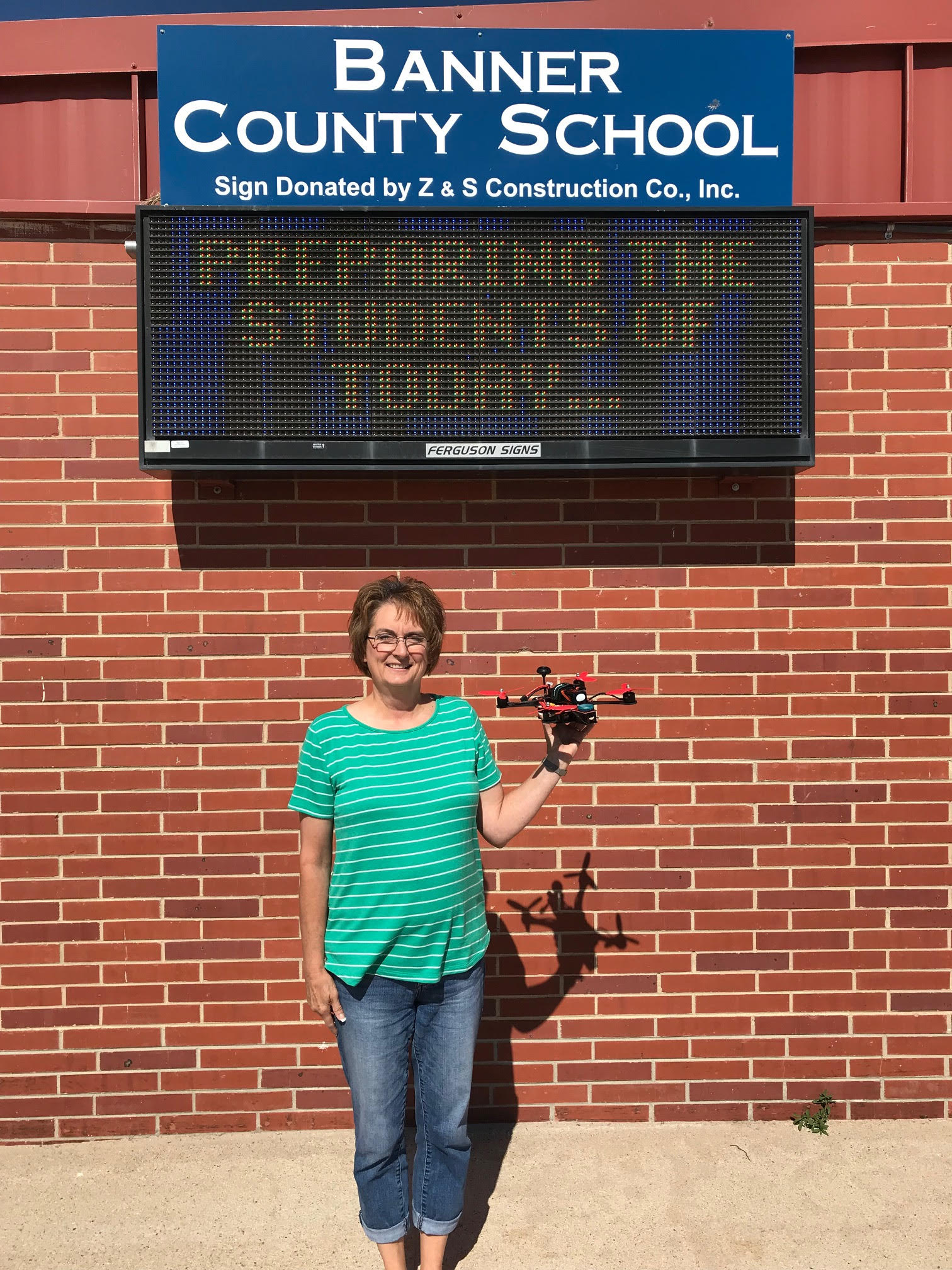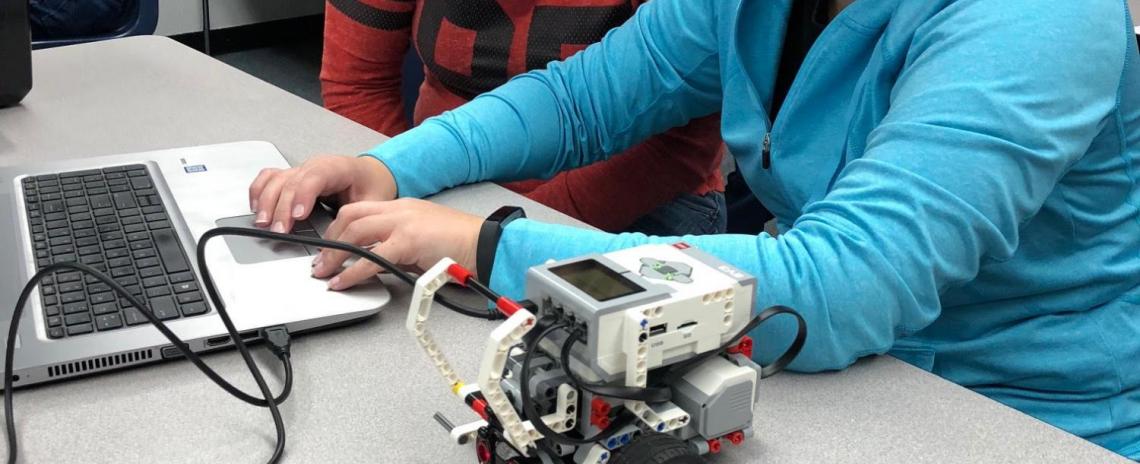The 5th Day: Novel Concepts and the Four-Day School Week
The 5th Day: Novel Concepts and the Four-Day School Week
By Tyler Dahlgren
Her first year as an administrator in Nebraska reaffirmed to Dr. Evelyn Browne why she made the rather uncommon move from a district she was very fond of in New Jersey to the foothills of a favorite vacation spot in the western-most part of the Heartland.
“For the last eight or nine years, my husband and I have visited the Sandhills, and the rural lifestyle was something we were really looking forward to,” said Browne.
The superintendent of Banner County School now drives 26 miles to fill up on gas, but she’s right where she wanted to be.
“My most immediate impression of Nebraskans is independence,” said Browne. “They are independent thinkers. The kids here are responsible learners. Everyone is very respectful.”
Her first year made quite the impression, but it’s the 2019-20 school year that has Browne and her staff brimming with excitement this summer.
Banner County is the latest Nebraska school district to opt for a four-day school week model, and it's an innovate one. Starting next year, Fridays at Banner County will be optional “Enrichment Days”, with hands-on learning opportunities not bound by curriculum.
“One of the things I found here was the need to provide more opportunities in STEM,” said Browne, who proposed a model which would continue to provide transportation and meals for students (Banner County is 62 percent free and reduced lunch) who chose to take advantage of the enrichment opportunities. “The next step was to get my staff on board with that idea, and, fortunately, they embraced it 100 percent.”
The set-up is simple. Every other Friday, approximately half of the Banner County staff will engage in professional learning while the other half facilitates activities for students in fields such as STEM, art and even exercise.
The possibilities are remarkable.
STEM Lab Maker Space. Yoga, dance and gymnastics. Fishing, robotics, rockets and outdoor adventures. New technology will allow students to dip their toes into new waters, such as podcasting and video production.
“We will have community members coming in to facilitate activities,” Browne added. “We are partnering with 4-H Extension Services, Game and Parks and a number of outside agencies as well. We started a show choir this year. Our director is doing Show Choir First Step and will be doing choreography and beginning dance for K-4 students.”
Another Banner County teacher took part in drone technology training in Boise, Idaho this summer. The change has opened the door to a world of possibilities, for students and staff alike. It's time to explore.

(Pictured, from left to right, are Banner County teachers Kari Gifford, Edward Montgomery and Bill Gifford)
“Our teachers are passionate and they want the best for their students,” Browne said. “They want to give them the best opportunities for learning.”
Browne is currently working to finalize the schedule. There will be 24 Fridays open to option, and her staff has already come up with more activities than they will actually have time for.
Banner County’s decision to move toward the four-day model wasn’t influenced by financial circumstances, but by enrollment. The county’s population has been dwindling, causing the school board to explore ways to attract students.
“We really wanted to save our athletics programs,” said Browne. “With the low enrollment, we lost varsity sports. That was a very important issue for the community.”
The district started seeking community input about three years ago. They did their research, examining different models in Colorado, Wyoming and Nebraska, at the same time adopting a hybrid model that included early releases on Fridays.
As the education field continues to evolve, the need for professional development opportunities grows stronger. Finding the time in the middle of a school year is a looming challenge for schools across the state.

(Above: Nancy Olsen attended drone training in Boise, Idaho this summer in preparation for Enrichment Days at Banner County)
In the eastern part of the state, Conestoga Public Schools has operated on a four-day week model since 2006. Mondays are devoted to specified training for staff members, collaboration, PLCs and guest speakers.
“We can really get a lot accomplished in a full day, as opposed to finding an hour here or an hour there,” said Conestoga Superintendent Dr. Beth Johnson. “We have 13 professional development days built in, and we also use two Mondays through the year to hold parent-teacher conferences.”
The model has proved to be beneficial to Conestoga, both financially and in drawing option students to the district. Conestoga has saved most on transportation costs. The district runs nine bus routes a day. Activities go on as usual on Mondays.
“We hear from parents and kids how busy their weekends are,” Johnson said. “Saturday and Sunday, they’re going non-stop and all of a sudden it’s Sunday night and they’re going ‘Oh my gosh, we have so much stuff we need to get caught up on.’”
Mondays are a consistent catch-up day for students, whether the day is spent on homework or at doctor’s and dentist appointments. For the most part, the model has paid off.
“We are always keeping our eye on how well kids are doing, progress monitoring and evaluating data to make sure that our test scores are steady,” Johnson explained. “Scores are good and very comparable to school districts around us. We’re above the state average on everything, and, like all districts, we are always trying to do better.”
During hectic winters like the one Nebraska just endured, snow days can throw a serious wrench in a school calendar. With Mondays off, Conestoga typically has less snow days throughout the course of a year than other districts in the area.
There have been instances where families with young children aren't as quick to warm up to the four-day model, but the district has found the standard 8-5 workday lend way to more staggered scheduling and non-traditional work weeks.
"They're finding this actually gives them another day to spend with their kids."
Hay Springs is a small town southeast of Chadron and the Nebraska National Forest with a district serving around 200 kids.
Beginning with the 2011-12 school year, the district opted for a four-day week and tacked 45 minutes on to school days to make up for the loss of Fridays. Assistant Principal Kim Marx, who has been with the district for 20 years, said staff has provided glowing feedback.
“Teachers advanced through more curriculum than they had in years,” said Marx. “The extra eight minutes added to each period made a difference. Even elementary teachers who adjusted scheduling said ‘I’ve never gotten through the whole reading book by the end of the year, but I did this year. And I had a week to do something different.’”
Like Conestoga, Hay Springs administration and school board monitored testing scores closely during those first few years. Two years ago, the district was one of the highest-scoring NICHE testers in the state. In 2014, Hay Springs was included on a Newsweek list of “America’s Top High Schools”, ranking in the top 200.
“We compete with anybody in the Panhandle,” said Superintendent and Principal Russell Lechtenberg, who just finished his second year in the district. “Early on, I would imagine there was some pushback, but now, if I’d mention putting Friday school back on the table, I would receive even more.”
One of the main advantages of the four-day school week for Hay Springs students is the ability to hold a job, an especially important caveat given education’s push towards career technology and molding career-ready graduates.
“Particularly for kids who aren’t involved in school activities, it gives them a four-day school week and a two-day career work week, and I think kids have taken advantage of that. They can hold a job and find out what going to work is like.”
When Lechtenberg was at Boyd County, he looked into four-day school weeks and found one of the major concerns to be childcare. Having Fridays open has opened the door for high school students to provide childcare for younger kids in the district.
“We are also blessed with two daycares, and maybe this helps the viability of those businesses,” he said.
Being a school with a four-day school week has helped Hay Springs to largely avoid a teacher shortage that is being felt in every corner of the state. When the district recently advertised for an opening in a principal position, Lechtenberg received eight applications. Middle school math and high school English openings were quickly filled with highly-qualified teachers.
“I can’t help but to think the four-day week was part of the reason,” Lechtenberg said.


